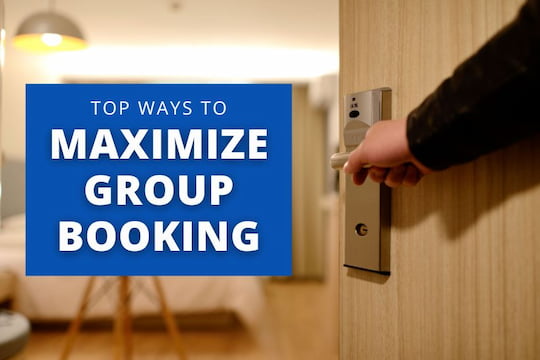In the dynamic world of the hospitality industry, the safety and security of guests and staff are paramount. This is especially true in emergency situations, where being prepared can dramatically shift the outcome from chaos to calm. A well-thought-out hotel emergency plan is essential, not only for ensuring general safety but also for meeting the specific needs of guests with disabilities. This is in compliance with the Americans with Disabilities Act (ADA) guidelines, which emphasize the importance of inclusivity in safety measures.
This comprehensive guide is specifically designed for hotel general managers, operations, and risk management personnel. It offers valuable insights into creating a robust and inclusive emergency plan. The focus is on addressing the unique challenges that individuals with disabilities may face during emergencies, ensuring that all guests are adequately catered to in such situations.
Risk Assessment: Identifying and Understanding Potential Hazards

The foundation of any solid emergency plan is a thorough risk assessment. This process involves identifying the various risks the hotel could face, including physical dangers like fire or structural damage, financial risks, security breaches, potential natural disasters, and even cybercrime threats. It's crucial to understand these risks in detail to develop a plan that addresses a wide range of emergency scenarios.
Identifying Risks: Start by listing all possible hazards that could affect your hotel. This includes considering the geographical location of your property, which may be prone to certain natural disasters like earthquakes, floods, or hurricanes. Evaluate internal risks too, such as kitchen fires, electrical faults, or security breaches.
Analyzing Impact: Assess the potential impact of these risks on your property, guests, and staff. How would a flood affect your operations? What would be the consequences of a data breach? Understanding the impact helps in prioritizing the risks.
Special Considerations for Guests with Disabilities: Part of the risk assessment should focus on identifying specific challenges guests with disabilities might face during an emergency. For example, understanding the needs of guests who use wheelchairs, have visual or hearing impairments, or other disabilities is crucial in creating an inclusive emergency plan.
Cross-Departmental Collaboration: A Team Approach
Developing an effective emergency plan requires input and collaboration from every department within the hotel. This cross-departmental approach ensures that all aspects of the hotel's operations are considered and everyone’s needs are addressed.
Involving Various Departments: Engage with teams from all departments – housekeeping, kitchen, front desk, security, maintenance, and management. Each team offers unique insights based on their day-to-day experiences and interactions with guests.
Workshops and Meetings: Organize regular workshops and meetings to discuss potential risks and emergency procedures. These sessions can be invaluable for brainstorming and creating a cohesive plan.
Special Training for Handling Guests with Disabilities: Ensure that staff from each department receives training on how to assist guests with disabilities during an emergency. This training should cover communication methods, evacuation assistance, and understanding the use of special equipment.
Communication and Training: Ensuring Everyone is Informed
Clear communication and comprehensive training are cornerstones of a successful emergency plan. All staff members must know the plan's details and understand their roles during an emergency.
Effective Communication Strategies: Develop clear communication strategies that include plain language, easy-to-understand diagrams, and specific instructions for each department. Ensure these strategies are accessible to all employees, including those with disabilities.
Regular Training Sessions: Conduct regular training sessions to ensure that all staff members, new and old, are familiar with the emergency procedures. Include practical exercises, such as role-playing scenarios, to help staff better understand their roles during different types of emergencies.
Training Customized for Guests with Disabilities: Include training modules specifically focused on assisting guests with disabilities. This could involve learning how to guide someone who is visually impaired or understanding the best ways to communicate with someone with a hearing impairment.
Resource Allocation: Equipping for Emergencies
A well-equipped hotel is better prepared to handle emergencies. This involves not only having the necessary physical resources but also ensuring that staff are trained in their use.
Essential Resources: Determine the essential resources needed for different types of emergencies. These might include first aid kits, emergency lighting, backup generators, and special equipment for assisting guests with disabilities, such as evacuation chairs or communication devices for the hearing impaired.
Training on Resource Use: Ensure that staff are trained on how to use these resources effectively. This training should be part of the regular drills and can be department-specific.
Resource Cataloging and Accessibility: Maintain an up-to-date catalog of all emergency resources and ensure they are easily accessible to staff. Regular checks should be conducted to ensure these resources are in working order.
Evacuation and Guest Safety: Prioritizing Accessibility and Comfort

The evacuation process during an emergency must be safe, orderly, and inclusive. This involves having clear evacuation routes and procedures specially tailored to assist guests with disabilities.
Evacuation Routes: Clearly mark and regularly inspect evacuation routes to ensure they are always accessible. Consider the needs of guests with disabilities – for example, ensuring that evacuation paths are wide enough for wheelchairs and free of obstacles.
Evacuation Drills: Conduct regular evacuation drills involving staff and, where possible, guests. These drills should simulate real-life scenarios, including assisting guests with disabilities. Feedback from these drills can be invaluable in refining your evacuation procedures.
Assembly Points: Designate and clearly mark assembly points outside the hotel. Ensure these areas are accessible to everyone, including guests with disabilities.
Emergency Drills and Plan Updating: Continuous Improvement
Emergency plans are not static; they require regular testing and updating. This ensures that the plan remains effective and relevant.
Conducting Regular Drills: Regularly scheduled drills help test the effectiveness of the emergency plan. These drills should simulate a variety of scenarios, including fires, natural disasters, and security threats. Pay special attention to drills that involve evacuating guests with disabilities to ensure that your procedures are effective and respectful.
Updating the Plan: Review and update the emergency plan regularly. Changes in hotel layout, staff turnover, and emerging risks all necessitate updates to the plan.
Detailed Procedures: Step-by-Step Guidance
Having detailed, step-by-step instructions for various types of emergencies is essential. These procedures should be clearly documented and easily accessible to all staff.
Developing Detailed Procedures: Create specific procedures for different emergencies, such as fires, natural disasters, and medical emergencies. Include steps on how to assist guests with disabilities during these scenarios.
Accessible Formats: Ensure that these procedures are available in formats accessible to all staff, including those with disabilities. Consider using visual aids, easy-to-read formats, and digital versions that can be accessed on various devices.
Mitigating Risks: Reducing Impact and Liability
An effective emergency plan not only responds to emergencies but also seeks to minimize their impact. This involves considering the legal and financial implications, especially in scenarios that involve guests with disabilities.
Preventive Measures: Implement preventive measures to reduce the likelihood of emergencies. This can include regular maintenance checks, security upgrades, and staff training on risk identification.
ADA Compliance: Ensure that all aspects of your emergency plan are in compliance with the ADA guidelines. This not only ensures the safety and dignity of guests with disabilities but also protects the hotel from potential legal liabilities.
Final Thoughts: Ensuring Safety and Compliance in Hotel Emergency Management

Creating a hotel emergency plan is a comprehensive task that demands careful consideration, regular updating, and active involvement from all hotel staff. It's a detailed process that requires hotel general managers, operations, and risk management personnel to focus on the safety and well-being of every guest, including those with disabilities. To achieve this, the plan must include regular risk assessments, cross-departmental collaboration, clear communication, and training, as well as proper resource allocation.
The key to a successful emergency plan is its detailed evacuation procedures, ongoing drills, and effective risk mitigation strategies. These elements are crucial in forming the foundation of a robust emergency plan. By implementing these strategies, not only is guest safety enhanced, but it also significantly contributes to the overall reputation and efficiency of the hotel. For those seeking assistance from a hotel revenue management company, get in touch with Bridgetown Revenue Management Solutions today!






















